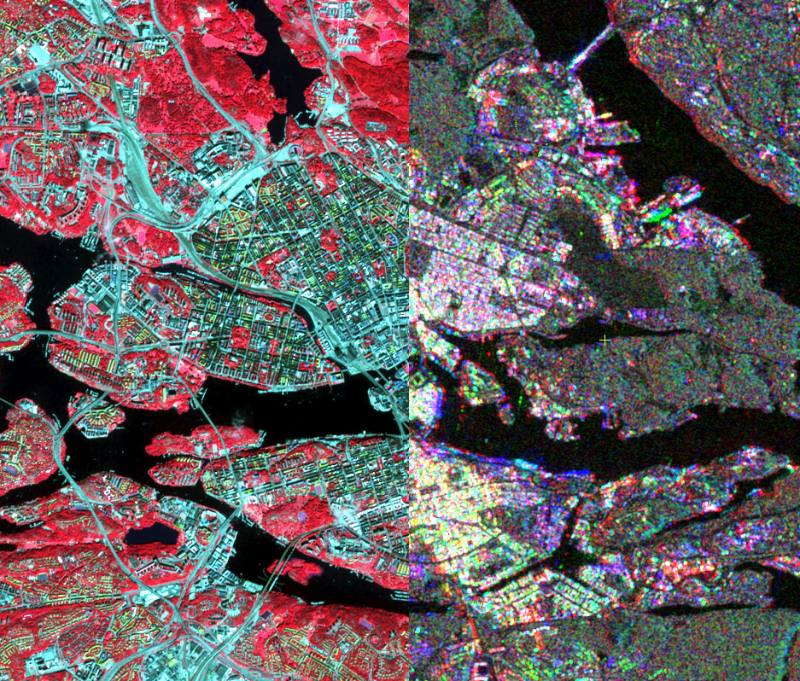Lectures 20h
Laborations 40h
Written exam
AG2413 Digital Image Processing and Applications 7.5 credits

This is an advanced remote sensing course on sophisticated methods and techniques for collecting, processing and analyzing remotely sensed data; as well as applications of remote sensing in urban planning, environmental monitoring and natural resource management. Throughout the course, emphasis will be placed on image processing, image analysis, image classification, remote sensing and GIS data integration, and applications of remote sensing in various applications.
Information per course offering
Information for Autumn 2024 Start 28 Oct 2024 programme students
- Course location
KTH Campus
- Duration
- 28 Oct 2024 - 13 Jan 2025
- Periods
- P2 (7.5 hp)
- Pace of study
50%
- Application code
50452
- Form of study
Normal Daytime
- Language of instruction
English
- Course memo
- Course memo is not published
- Number of places
Places are not limited
- Target group
- No information inserted
- Planned modular schedule
- [object Object]
- Schedule
Contact
Yifang Ban (yifang@kth.se)
Course syllabus as PDF
Please note: all information from the Course syllabus is available on this page in an accessible format.
Course syllabus AG2413 (Spring 2022–)Content and learning outcomes
Course disposition
Course contents
- Remote Sensing & In Situ Data and Image Processing Systems
- Image Processing
- Image Analysis
- Image Classification
- Digital Change Detection
- Remote Sensing Applications
The course is composed of lectures, laboratory exercises, readings and student presentations.
Intended learning outcomes
Students will gain theoretical knowledge and practical skills on digital image processing, analysis, and applying these techniques in various remote sensing applications
Literature and preparations
Specific prerequisites
A completed Bachelor of Science in Engineering or 180 credits academic studies in the field of Technical Science, Environmental Science, or planning and documented proficiency in English corresponding to English B.
Furthermore AG1321 Remote Sensing Technology or AG1324 Phtogrammetry and Remote Sensing or equivalent
Equipment
Literature
Jensen, J.R., 2005. Introductory Digital Image Processing: A Remote Sensing Perspective, 3rd edition, Prentice Hall, Upper Saddle River, New Jersey. 526 pp.
Examination and completion
If the course is discontinued, students may request to be examined during the following two academic years.
Grading scale
Examination
- LAB2 - Laboratory Work, 3.0 credits, grading scale: P, F
- PRO1 - Project, 1.5 credits, grading scale: P, F
- TEN2 - Written examination, 3.0 credits, grading scale: A, B, C, D, E, FX, F
Based on recommendation from KTH’s coordinator for disabilities, the examiner will decide how to adapt an examination for students with documented disability.
The examiner may apply another examination format when re-examining individual students.
Other requirements for final grade
Written exam (TEN1; 3 cr)
Approved laboratory reports (LAB1; 3 cr)
Project (PRO1; 1,5 cr)
Opportunity to complete the requirements via supplementary examination
Opportunity to raise an approved grade via renewed examination
No opportunity to raise an approved grade via renewed examination
Examiner
Ethical approach
- All members of a group are responsible for the group's work.
- In any assessment, every student shall honestly disclose any help received and sources used.
- In an oral assessment, every student shall be able to present and answer questions about the entire assignment and solution.
Further information
Course room in Canvas
Offered by
Main field of study
Education cycle
Add-on studies
Written exam (TEN1; 4.5cr)
Approved laborations (LAB1; 3cr)